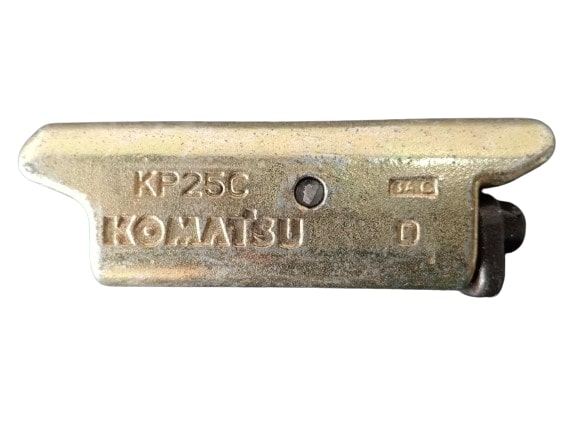Dismantled parts from PC200LC-8M0 C15621 and PC200-8M0 C22176.
The Hydraulic Tank of the Komatsu PC200LC-8M0 excavator is a vital component of the hydraulic system, responsible for storing and supplying hydraulic fluid to power the machine's hydraulic circuits. Hydraulic fluid is essential for operating critical functions such as the boom, arm, bucket, and other hydraulic attachments. Here's a detailed breakdown of the hydraulic tank and its role:
1. Storage of Hydraulic Fluid:
- The hydraulic tank holds the hydraulic oil needed to power the machine’s hydraulic systems. Hydraulic oil is used to transmit power from the engine to the hydraulic components, such as cylinders, motors, and pumps, ensuring smooth operation of the machine’s attachments and movements.
2. Tank Design and Capacity:
- The tank is typically made of high-strength, corrosion-resistant materials like steel to handle the pressure and demands of hydraulic operations. It is designed with enough capacity to store the required amount of hydraulic fluid and maintain fluid levels under various operating conditions.
- The Komatsu PC200LC-8M0 has a hydraulic tank with a specific capacity suitable for the machine’s operating needs, ensuring sufficient fluid is available to keep the hydraulic system running efficiently.
3. Filtration and Cleanliness:
- The tank is equipped with filters and breathers to ensure the hydraulic fluid remains clean and free from contaminants, which can cause damage to the hydraulic components. There is usually a breather cap on the tank to allow air to enter while preventing debris or dirt from contaminating the fluid.
- In-line filters and return filters are often part of the tank system to remove contaminants from the hydraulic oil before it reenters the system, prolonging the lifespan of the components.
4. Fluid Monitoring:
- The tank is typically fitted with a sight gauge or fluid level indicator that allows the operator to monitor the hydraulic oil levels easily. Maintaining the correct oil level is crucial for efficient hydraulic operation and preventing damage to the system due to low oil levels.
5. Cooling and Heat Dissipation:
- Hydraulic systems generate heat during operation, so the tank is designed to help dissipate heat, either by natural convection or through the use of external coolers. Maintaining optimal temperature of the hydraulic fluid ensures the system works efficiently and prevents overheating.
6. Pressurization:
- In some systems, the hydraulic tank is slightly pressurized to assist with fluid flow and reduce cavitation within the pumps. This ensures smooth and consistent fluid delivery throughout the system.
7. Maintenance and Safety Features:
- Regular maintenance of the hydraulic tank includes checking fluid levels, replacing filters, and ensuring there are no leaks. Proper hydraulic tank maintenance is essential for preventing system failures.
- Many hydraulic tanks, including those on the PC200LC-8M0, are equipped with safety features such as relief valves to prevent overpressurization.
8. Connection to the Hydraulic System:
- The hydraulic tank is connected to the system via hoses and fittings that deliver the fluid to the hydraulic pump. The pump then pressurizes the fluid to operate the machine’s hydraulic cylinders and motors.
In Summary:
The Hydraulic Tank of the Komatsu PC200LC-8M0 stores and manages the hydraulic fluid needed for the excavator’s hydraulic system. It plays a critical role in maintaining the flow of hydraulic fluid to power the machine’s various attachments and movements, ensuring optimal performance. The tank is designed for durability, efficient fluid management, cooling, and easy maintenance to ensure the excavator operates smoothly and reliably in demanding environments.





